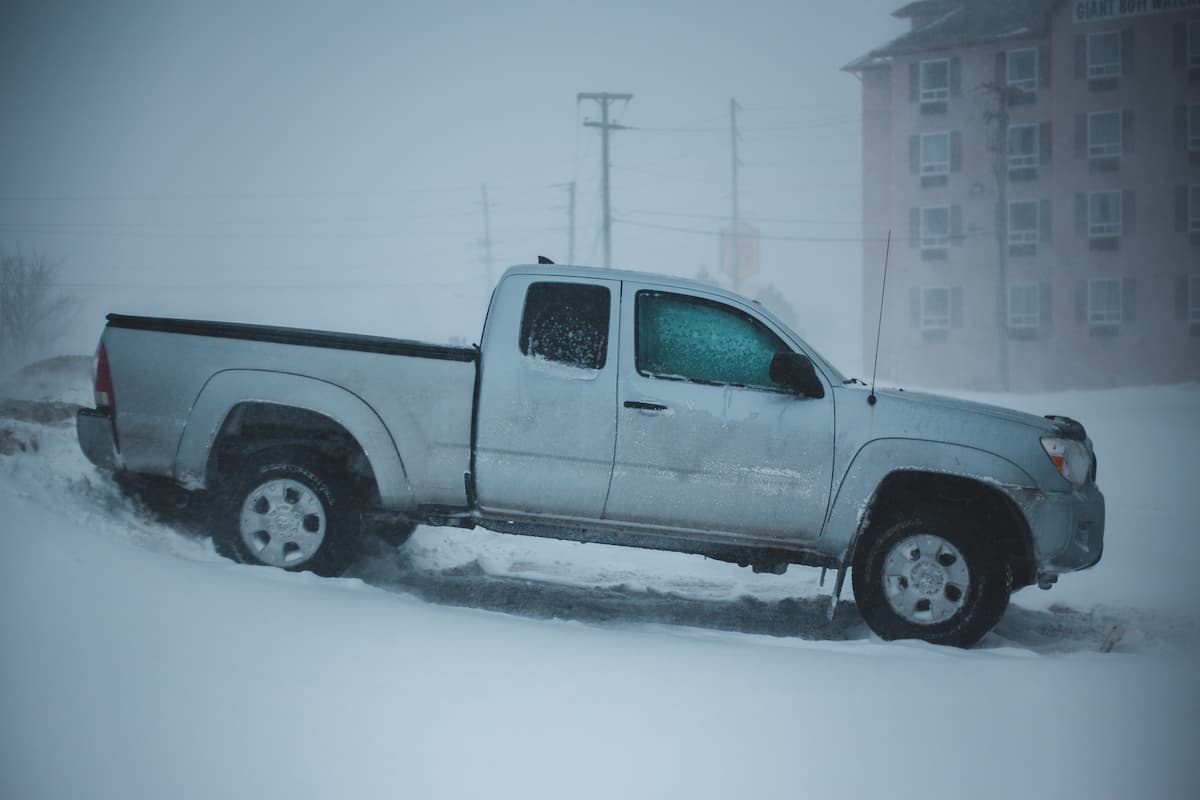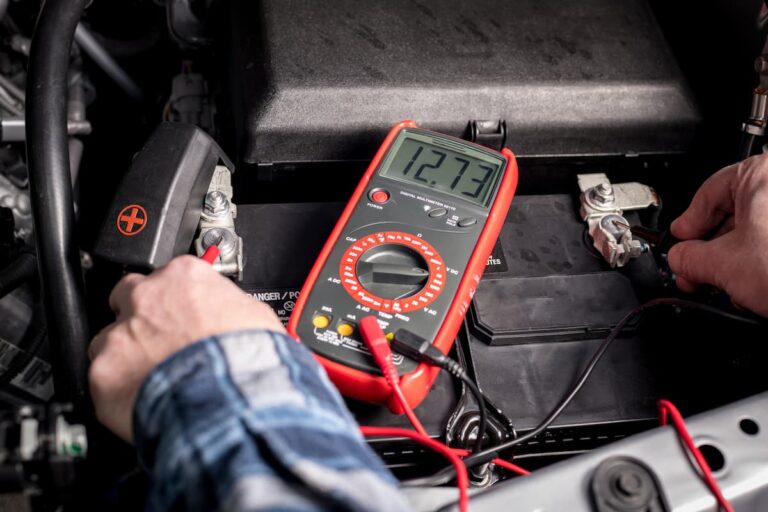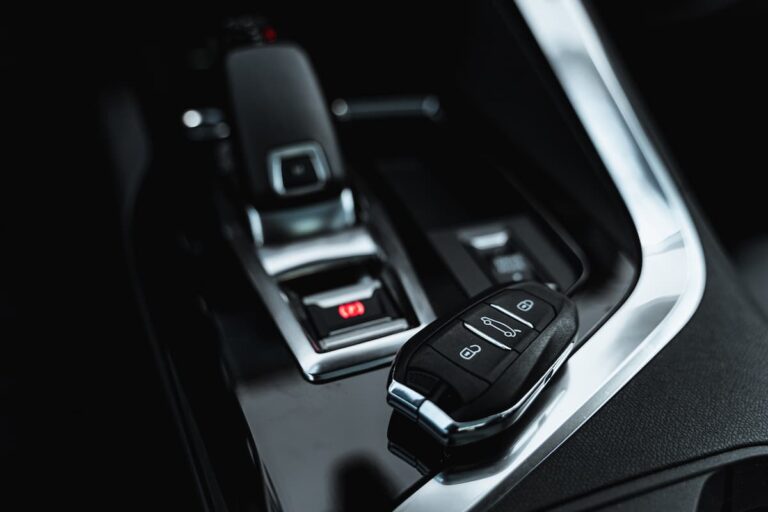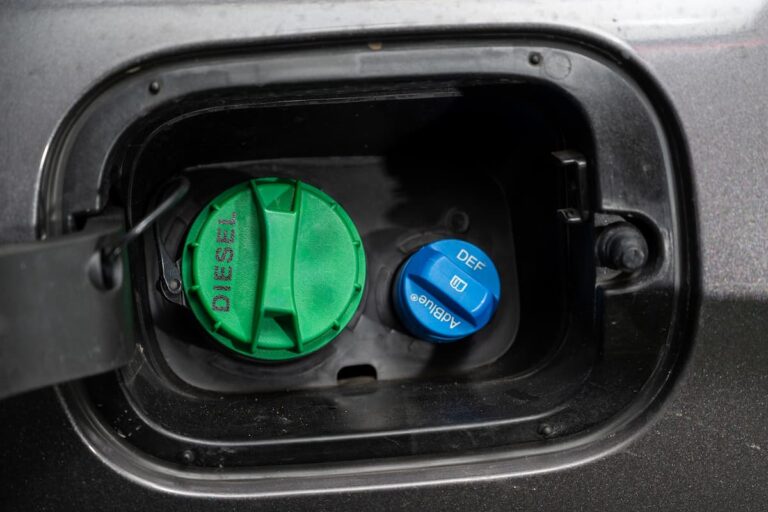Why Do Cars Have Antennas?
Car antennas have progressed from long, thin metal rods used for the radio to compact, aesthetic, fin-shaped structures that receive multiple signals from various sources.
The primary role of your car antenna is to pick up magnetic radio waves, which allow you to listen to the radio. However, it may also enable GPS navigation, Wi-Fi connections, and vehicle-to-vehicle communication. With technology advancing quickly, 5G connections may be next.
Though there is considerable progress in communication technologies, antennas in most cars are just for the radio.
How Do Car Antennas Work?

Radio stations generate radio waves through a transmitter and transmission antenna. The car antenna picks up these radio waves and sends them to a radio receiver.
The receiver then separates the waves, allowing you to tune into your radio station of choice.
Various factors determine how easily the antenna picks up these waves, including:
- Length of the antenna
- Design of the antenna
- Radio wavelength.
Your car antenna also detects AM and FM frequencies.
Over the years, manufacturers built car radios only for AM and FM frequency bands. The advent of HD Radio Broadcasts raised concerns about whether the standard antenna could still pick up the signals.
The answer is yes. HD Radio transmissions are still based on AM and FM frequency bands.
You’ll need a specialized radio, but you won’t have to change the antenna.
However, satellite radio requires a specialized antenna because broadcasters (like Sirius XM) use digital frequencies, which a standard antenna cannot pick up.
Why Don’t Modern Cars Have Antennas?
Modern cars still have antennas. They’re just not out in the open like on older vehicles.
The modern antenna is smaller and more advanced.
To know why antennas today are so discreet, one has to understand why they were so tall in the first place.
For good reception, antennas have to capture the frequency. If you have a signal of 100 Mhz, the antenna has to be around ten feet.
However, no car antenna back in the day was that tall.
Though long rods captured frequencies better, most were only a quarter of the wavelength, or about 31 inches (78 cm) tall.
The antennas were either retractable or non-retractable. If you had a retractable antenna, extending the rod to its maximum length would mean better reception.
With more expensive cars, pushing a button would extend or retract the antenna. In more affordable vehicles, you had to adjust the rod manually.
Other vehicles had non-retractable antennas. You didn’t have the option to modify them, and they were immovable once installed.
Technological advancements have led to shorter frequency wavelengths (higher frequency broadcasting), reducing the need for such long antennas.
Progress in technologies like Wi-Fi and satellite radio also contributed to the demise of the metal rod. Today, they’re mostly only available on pickup trucks.
Disadvantages of Long Antennas
The first and most apparent disadvantage of a long antenna was its flimsiness. The metal rod wasn’t the most durable and could break off easily.
Long antennas were also easy to steal since they were so exposed.
One disadvantage that isn’t so obvious was their effect on fuel efficiency. Tall antennas increase a car’s drag coefficient (the relationship between aerodynamic resistance and shape).
The higher the drag coefficient, the more fuel a car needs to cut through the air.
Car manufacturers looking to improve fuel economy decided that the antenna had to go as thin as it might be.
The replacement shark-fin antenna provides more secure housing for the antenna and reduces drag. It’s also sleeker and allows cars to have up to twenty antennas, whether for GPS navigation, Wi-Fi, or satellite radio.
Modern antennas are a win-win for drivers. You don’t have to worry about frequent replacements, and you get more out of them.
Why Do Pickups Still Have Long Antennas?

The primary reason trucks still have long antennas is for stronger radio signals.
While progress in broadcasting has reduced the need for long antennas, they’re still the most effective in capturing radio waves.
Since pickup trucks are mainly used in rural areas (where signals are low), it makes sense that they still retain the tall metal rod.
Some even have two, one on each side of the cargo area.
The main reason is that pulling a trailer with your truck creates “blind spots,” whereby you weaken radio signals or block them altogether. The cabin itself might block these transmissions if it’s big.
A dual-antenna system ensures your truck picks up signals from both sides, resulting in impeccable reception throughout your journey.
The final reason trucks have long antennas is the ease of repair.
Windshield and shark-fin antennas have a longer service life, but they’re also expensive to fix when damaged.
The ethos of a work truck is efficiency. If something breaks, you want to fix it as soon as possible. You also want to do it at the lowest cost and, if possible, on your own, and the old-school rod antenna ticks all those boxes.
Can a Car Wash Break My Long Antenna?
Automated car washes are notorious for damaging antennas.
They’re not the only vulnerable parts (mirrors and wheels are also on the list), but they’re top of the list due to their placement.
Most services advise you to adjust the length or unscrew your antenna to reduce the risk of damage. You’ll have to carry a wrench if the rod is non-retractable so you can screw it back on tightly.
Automated car washes are a use-at-your-own-risk situation as most will not take any responsibility for damage to your vehicle.
Conclusion
Car antennas have come a long way and are still far from being obsolete.
Every car still has a radio, and modern antennas allow your vehicle to receive signals from other sources as well.
Some pick-up trucks still use the old-school rod antennas as they’re the cheapest and easiest to replace, but most antennas these days are in the shark-fin casing on the roof of your vehicle.






